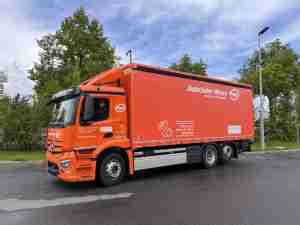Smaller transport companies are growing from collaboration rather than shrinking by competition
posted by AJOT | Mar 25 2015 at 04:30 PM | Intermodal | Logistics
All around the world, the very small and the very large transporters and warehouse operators are surviving (maybe thriving), but the mid-level is being squeezed at both ends. While small businesses can create personalized, niche service offerings and the large ones have size and network capacity on their side, the middle can’t seem to scale up to keep up, and it’s too costly to scale down.
Unlike a transaction-based business such as freight forwarding, transporters have huge capital costs tied up in depots and trucks that are often impassable barriers to profitable growth. But there is an alternative to expand without expensive investments: build solid relationships with collaborators to gain the growth and profitability you need.
When small and mid-level operators in each domestic market start collaborating, they can compete with the larger conglomerates. Working together to build a virtual, integrated supply chain network brings you the potential to scale from a state-based operation to national coverage. Even a local carrier could build the capacity to link to major capitals. This kind of collaborative scaling can be done in a variety of ways, both formal and informal.
Small to mid-size international freight forwarders have been doing it for years. They figured out they can’t cover the entire world after all, so they link with agent networks to complete their supply chain. In Europe – because of the complexities of moving across multiple countries – networks of smaller operators have flourished. The concept is just starting to take hold in the Asia-Pacific region, the US, and Canada.
The advantages of being in small to mid-size collaboration are you retain your niche brand wherever it works for you, and you pick up delivery runs when cooperative peer operators weave together a complete service network. You not only raise your profile, you take on more jobs without having to invest in larger fleets or operational infrastructure. In fact, you maximize the use of your current capital investments.
Because we’re talking collaborative setups rather than mergers, you gain all the positives without invading the commercially sensitive areas of your business, and you keep your own identity, autonomy, and P&L.
Change Your Mindset: Collaborating with ‘Competitors’
Rather than seeing your ‘competitors’ as enemies, try identifying what it is about their offerings that is compelling. Start the conversation with operators that share your standards and value but compete on different routes. Then simply extend the offer for freight sharing.
Once you have a 4PL network built on excellent personalized service – each individual company does better work, offers better options, and earns better results for end customers. See the benefits of securing the customer between you rather than having a win-some-lose-some perspective. When you expand the services you offer every client, they’ll be happier and you’ll earn greater prospects for referrals.
The number of trucks that drive around empty and cut the profit margin from a delivery is disappointing. An empty truck is dead money moving. A local driver turns away a lot of work because he won’t risk an out-of-region delivery that may mean an empty return, but cooperation gives him the flexibility to find back haul or a city-based business to collect the job at the half way point. Back loading is often viewed as an exceptional win, but it can become the planned completion of every run. When your availability is posted via your network, you’ll find that the operators you once saw as ‘competitors’ are suddenly filling your truck for you.
Make It Possible with Technology
With today’s subscription-based technology platforms, you can affordably build the public face of a virtual cooperative. Whether it’s just you and the region next door, or you partner with enough businesses to cover your country, the ultimate size of your operation is up to you. The more your network aligns itself on a common, cloud-based application suite, the more your minimal capital input will lead to maximized potential gains.
You’ll be in a better position if it’s you that initiates the idea of a cooperative – you that sets the agenda – because then it will work best for your business. Seek partners with experience – people with fourth party logistics expertise – to join your network planning. Plenty of cooperatives have found success before. If you follow their lead, you won’t have to reinvent the wheel to get the operation rolling.
A shared software platform supplies the essential track and trace, automatic notifications, reciprocal invoices, automatic milestone updates, and mobility that small and mid-size operators need to scale up, keep up, and thrive. When you work better together, everyone benefits.







